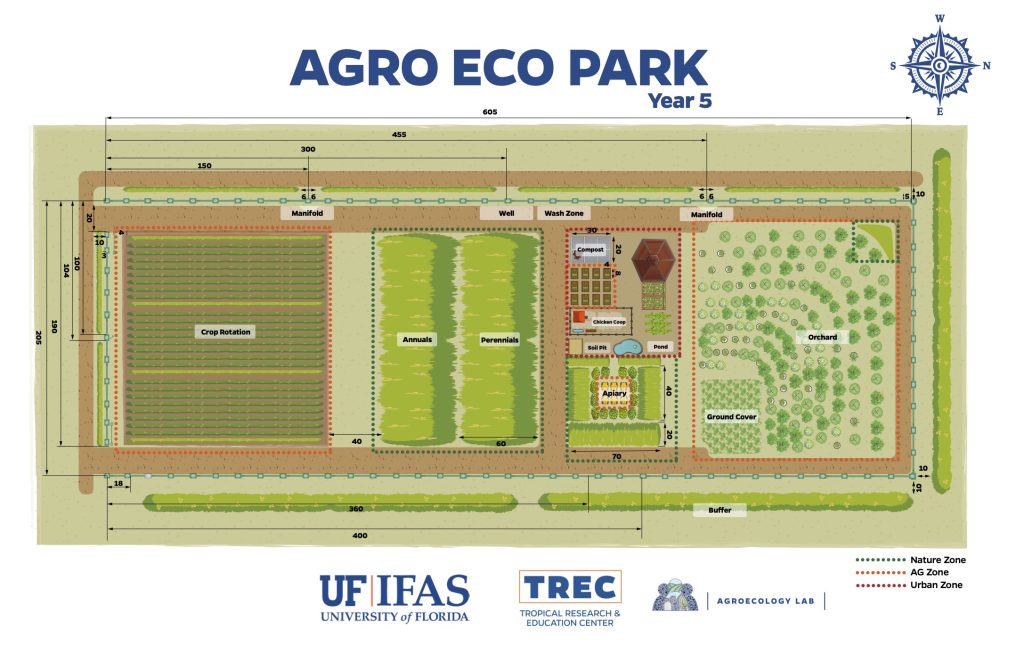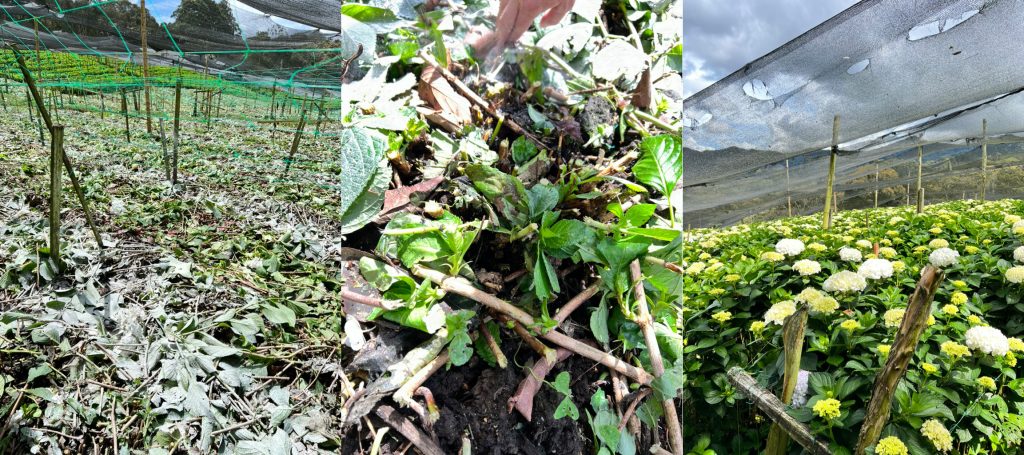I started my journey as a farmer four years ago without experience (I have a bachelor’s in industrial design), but I knew I needed to find a way to do it right.
Having all your money between soil, sun, and water is a considerable risk. Even though I didn’t have knowledge of how to make money on a farm, I knew that I also needed to take care of the planet for the planet to take care of me.
My first attempt to learn was reading as much as possible. The concepts in the books were obvious (Farming with Native Beneficial Insects: Ecological Pest Control Solutions/ by the Xerces Society 2014), But for some reason, it didn’t work.
After much trial and error, I decided to try another way to further my education and joined the Master Gardener Class at the UF/IFAS Extension. That was just the beginning of a new world for me. It not only showed me an immense amount of knowledge but also how much people are invested in the world of plants. This program opened a bigger door for me, the Agroecology Lab at TREC (Tropical Research and Education Center) at the University of Florida Institute for Food and Agricultural Science.
I started working at the UF/IFAS TREC Agroecology lab without knowing what I was getting into. They had an opening for Hemp research, and for me, it was just a perfect opportunity to learn how to make it right from the source.
Agroecology? It was a new term for me; even in the late 1970s, a group of students and teachers at a school of tropical agriculture in Cardenas, Mexico, talked about it. (Agroecology The Ecology of Sustainable Food Systems, Third Edition by Stephen R. Gliessman). I never heard about that before. Farming that works with nature to maintain production, economic and environmental well-being.(Introducing Agroecology by Zack Brym), The concept looks so obvious but, again to put it in practice was very abstract to me. As I went along with my training in the lab (it wasn’t all about hemp research after all), all the puzzle pieces started to make sense.
All my questions start to be answered using agroecology principles: Productivity, Diversity, Resilience, and System Thinking. (Introducing Agroecology by Zack Brym),

PRODUCTIVITY
Productivity is measured not only by the quantity of crops produced but also by the quality and sustainability of the production system. By using agroecological principles such as crop diversification, soil conservation, and natural pest management, farmers can improve their yields while also protecting the environment and ensuring the long-term viability of their farms.
DIVERSITY
Agroecology emphasizes the importance of diversity in agriculture, including intercropping, crop rotation, and agroforestry. These practices improve soil health, reduce the need for chemical inputs, and support a wider range of pollinators and beneficial insects, which can help control pests naturally.
Traditional or conventional farming was characterized by efficiency, uniformity, and maximization using monocropping, which is the agricultural practice of growing a single crop year after year on the same land without rotation through other crops. These practices can result into deforestation, water pollution, greenhouse gas emissions, and soil degradation in the same way farming just with limited resources can result in hunger.
RESILIENCE
This principle encourages farmers to adapt to changing environmental and social factors. Agroecology also emphasizes the importance of social resilience, which involves building strong relations between farmers, consumers, and local communities. Farmers can create a more robust and resilient food system that benefits everyone by working together.
SYSTEM THINKING
By taking a holistic approach to farming, agro-ecologists can monitor dynamic patterns, identify the underlying causes of problems, and develop solutions that address the root cause in a specific context. This approach involves considering the social, economic, and ecological dimensions of agriculture and the interactions between them.
AGRO ECO PARK
In the lab, we developed, with the help of a panel of experts, a five-year plan for a place that is called Agro Eco Park. The park is being built to show farmers Agroecology. In practice, it’s a field of different options, concepts, and ideas of farming with environmental conservation and social responsibility in mind. For me, seeing all the concepts in real life was mind-blowing; you need to start working with what you have, in our case (South Florida), with inert soil and very harsh conditions. You need to ask yourself a lot of questions in order to start building a plan. “How can we make it better? How can we build our soil? How can we depend less or nothing on chemicals? How do we work with nature and not against it?”

It is essential to understand the specific conditions of your land in order to design a resilient and sustainable agroecosystem: Location, soil, water, sun, wind, and wildlife. Concepts such as Native plant borders, conservation zones, buffers, cover crops, and beneficial insects became clear to me.
TRIP TO COLOMBIA
I traveled to Colombia and saw my country with a different set of eyes. I noticed that because of the land conditions and the lack of economic resources, they use very different practices than us.
Agroforestry is a system that involves the integration of trees, crops, and livestock on the same piece of land.

Prioritizing conservation in farming systems looks like minimum soil disturbance, permanent soil cover, and crop rotation.
These practices are in sync with the principles of agroecology, but in cases like the farms I visited, they also do it because of economic reasons.

WHAT’S NEXT?
For me, another journey began; now I have the social responsibility of letting everybody know about Agroecology. How can we produce food in a manner that respects the land, its ecology, my community, and the consumer?. (Introducing Agroecology by Zack Brym),
I will keep an open mind throughout this learning experience, applying as much as possible to my farm and helping others develop a plan to build their agroecosystem.
I would like to show in the long run how implementing sustainable agro-ecosystems will benefit the environment, farmers, and consumers, and highlight the work of others like I did during my visit to Colombia and provide a platform for discussing those experiences. Join me on this journey.
Resources
- UF/IFAS EDIS document Introducing Agroecology https://edis.ifas.ufl.edu/publication/AG472
- Resilient Garden: Sustainable Gardening for a Changing Climate, 2023 by Tom Massey
- Farming with Native Beneficial Insects: Ecological Pest Control Solutions, 2014 by The Xerces Society
Note: All images and contents are the property of UF/IFAS.’



